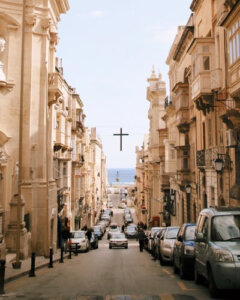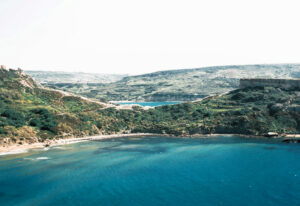Malta – the secret Stand-Up Paddle paradise? [2024]
Malta has breathtaking coastlines. Between February and December, Malta’s Mediterranean climate allows stand-up paddling or stand-up paddling. This makes Malta an interesting destination for stand-up paddlers all year round.
Stand-up Paddle Malta – Our answers for quick and cross readers
- Where are the best stand-up paddling hot spots in Malta?
- Stand-up paddling in Malta—relaxation and workout for the body directly on the sea
- Things to know about stand-up paddling in Malta & tips for starters
- How to prepare for stand-up paddling!
- 7 SUP rules—compact knowledge for stand-up paddlers on Malta
- FAQs—Do you have questions about SUP in Malta? We give you the answers!
- Conclusion: Enjoy the workout or relaxation with SUP in Malta
Where are the best stand-up paddling hot spots on Malta?
SUP in the north of Malta with view to Comino and Gozo
The north with its many sandy beaches is predestined for stand-up paddling.
+ Mellieha Bay, SUP rental possible
+ Il-Mistra
+ Popeye Village
Are you an experienced SUP rider? Then head over to the beautiful island of Comino by SUP as early as 9am to 10am from Cirkewwa. With the stand-up paddle, you are not bound to boat or ferry connections and waiting times for the approximately 2.5 – 3 kilometers. You circle Comino or explore the Caves with the SUP. Sun worshipers spend the day at the beautiful turquoise water. Before it goes in the afternoon or evening again back with the SUP to Malta. Or plan the tour immediately further to Gozo.
The west of Malta with the golden beaches for SUP
In the west you will find three stunning beaches at once.
+ Golden Bay
+ Ghajn Tuffieha Bay
+ Gnejna Bay.
Renting a SUP is possible at Golden Bay. The three beaches are less than three kilometers apart, so they are next to walk across the sea.
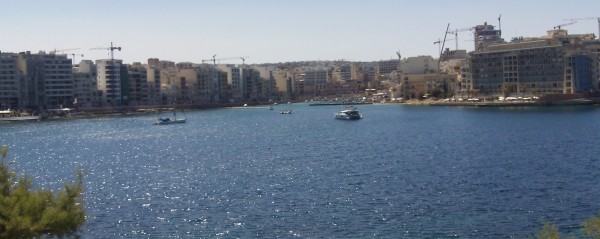
The east of Malta to SUP directly at the party miles
Bugibba is certainly wonderful, directly on the open sea. From the swell, it is calmer in the harbor area of Spinola Bay.
+ The whole coast of St. Paul’s, Buggiba and Qawra
+ Spinola Bay
+ Balutta bay
+ Exiles Bay
On the coast of St. Paul’s and Bugibba as well as in Spinola Bay you can rent SUP.
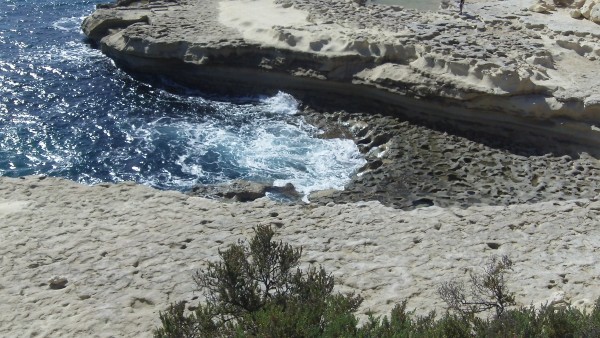
SUP in the south of Malta with the fishermen
Marsaxlokk is known as a tourist attraction the fish market and at St. Thomas Bay a dog jumps with his master from the cliffs. The beaches in the south are mostly rocky. However, stand-up paddling is possible.
+ Pretty Bay
+ Marsaxlokk Harbour
+ St. Thomas Bay
+ Marsascala Bay
The northern islands of Gozo and Comino for SUP
+ Xlendi Bay
+ Ramla Bay
+Marsalforn Bay
+ Blue Lagune
Xlendy Bay and Marsalform are home to rental companies for water sports and SUP.
How many stand-up paddle rental companies are there in Malta?
Some statistics we do not find in Malta. Is it because the government does not keep statistics? The last publicly available data are from 2008. There are between 35 and 45 providers (water sports operators) for sports equipment at the approximately 27-30 reserved swimming zones. They are located directly on the beach or in the immediate vicinity. Not all rental companies are open all year round and have SUP for rent.
Stand-up paddle on Malta—relaxation and workout for the body directly on the sea
Dozens of beaches in Malta invite you to relax after work or workout with SUP. There is no SUP season in Malta. Stand-up paddling is possible all year round. With sun between April/May and November is certainly the best time. Temperatures above 23 degrees and water temperatures above 20 degrees scream to go around Malta’s islands with the SUP.
What is stand-up paddling, and who invented it?
As the rider of the SUP, you stand wide-legged in the middle of the board. With the paddle between 180 – 250 cm long, you move left and right paddling forward on the water. Stand-up paddling resembles a canoe ride and is a mix of surfing, surfing, and paddling. Inventors of SUP are said to be the Polynesian fishermen of Tahiti, Hawaii, and New Zealand.
Is SUP workout, relaxation, or yoga?
Paddling a big round of SUP in Mellieha Bay or Pretty Bay in summer at sunset after work for 3-5 km is pure relaxation and stress relief. Picking up the pace and going through stand-up paddling with full body effort is a full body workout. Stand-up paddling strengthens the legs, torso, glutes, abs, shoulders, and arms. It activates the muscles for balance and is similar to working out on a vibration plate. Stand-up paddling energizes your body and is a perfect water workout. The yoga SUP allows you to have your daily yoga session at sunrise or sunset. The benefits of yoga are well known. On a SUP, yoga is more intense and more challenging than on land.
Water temperatures for SUP on Malta
From April / May, the water in Malta already reaches 19 to 20 degrees. From June to October, it is consistently between 21 and 23 degrees. Then, from mid-December, the water temperature drops from around 19 degrees to as low as 16 degrees in January. From the middle of February, we are back on the water with the SUP kayak. There are already 17 – 18 degrees water temperature and the air temperature rises to 25 degrees on some days. For those who are warm, a wet wetsuit noticeably increases the SUP experience. Neoprene shoes are useful from November to April for tours longer than 45 minutes.
At which beaches are SUP offered?
SUP is fortunately independent of the beach and not allowed in the restricted swimming zone near the beach. On every beach in Malta, there are access points to the sea for stand-up paddling. Not every season and not every rental company offers SUP rental near the beach.
What kind of weather is best for SUP in Malta?
As for water temperatures, the most desirable time for SUP is May through November. In July and August, we have 2 – 3 times for fewer days the Xlokk or Sirocco Wind (Scirocco, Schirocco). In the heatwave, so stand-up paddling often takes place in the mornings between 7am and 10am and in the evenings between 7pm and 9pm. When the wind is calm, and it’s 40 degrees and more between 11 a.m. and 4 p.m., SUP is not for everyone’s enjoyment.
When is it particularly windless for SUP in Malta?
For starters, wind calm, and low waves are certainly essential for an exhilarating SUP experience. Check on an app like Windfinder for wave height. Unfortunately, apps are inaccurate when it comes to wave height. Our experience is, a swell displayed in the app up to circa 100 centimeters is almost not felt near beaches and stand-up paddling is possible. With increasing winds above 15 km/h you need more stability on the SUP. Between July and September, Malta is pretty much windless. These three months with little wind are a pleasant time for stand-up paddling.
World of Malta insider tip: Burning sun on the sea
The sun’s rays on the water are much more intense than on land. A waterproof sunscreen with a high sun protection factor of 50+ and 7 or special UV surf shirts.
Things to know about stand-up paddling in Malta & tips for starters
Stand-up paddling, or SUP for short, is a relatively new water sport in Europe. Since the beginning of the millennium, SUP has been available as fixed boards (hard-board), similar to a surfboard. For many years, easily transportable, inflatable SUP have been on the market. With an inflatable SUP, you are very flexible on Malta. Because with the 12-15 kg light SUP backpack you can reach all coasts on Malta in a good 60 – 70 minutes by bus, scooter/bike or car. After 10 minutes of pumping up, you can already start your water workout. Derived from the sport of canoeing, stand-up paddling is quick to learn compared to surfing, surfing, or kite surfing. And don’t be put off by what looks at first glance like an inflatable air mattress. The board inflated with 15 PSI (1 – 1.1 bar) is like a rubber covered board. The inflatable SUP does not give way in the water.
The step-by-step instructions to the first stand-up paddling in Malta
In as much as you prefer learning by doing, then you are in the right place. We had no idea, and suddenly saw inflatable stand-up paddles in the sports store. We thought about it for a day and started immediately. And, like buying a car: suddenly we see stand-up paddlers with inflatable SUP’s everywhere. Surely we needed without SUP course to the perfect driving a few hours longer. However, to be honest, we had the same amount of fun without this course in Malta. From the third Stand-up-paddling, we had to voluntarily jump into the water to cool down. Getting off balance, there was no more. You rent a SUP? The rental company will teach you how to get started. You can learn stand-up paddling quickly and easily in a few minutes in calm seas.
Step 1: Look at the stand-up paddle
Where is the back, where is the front? Where do you attach your Duffel bag or bag? How do you attach the fin? Where do you attach the safety line (leash) to the SUP? Where do you want to attach the leash to your leg? Ankle, calf, below the knee joint or above the knee joint? Initially, adjust the paddle so that you can still grip the handle firmly with your arm slightly bent. If you will be riding the board on your knees for the first time, keep the paddles pushed together.
Step 2: Bringing the SUP to the sea and mastering the ascent
After pumping up comes already the second workout. Unless you have a yoga board, your SUP has a carrying handle in the middle. The inflatable SUP usually weighs between 12 and 15 kg, the weight of a crate of lemonade. Due to the fin with a depth of 20-25 cm, you can’t always put the SUP in the water at the shallowest spot. Watch out for stones in the water and a water depth of at least 40 cm. Then you will not damage the fin when getting on the SUP. Alternatively, put the board with the fin into the water sideways. The tail into the depth and the bow into the shallow. At the latest now you should put on the safety line, the leash. You turn the SUP around a few meters later in the water while paddling. Similar to reversing a car out of a driveway.
Step 3: What is the best way to ride or drive the SUP?
When you are knee-deep in the water, you can already sit on the board. Not only starters ride the first meters on their knees or sitting and feet forward into the sea. So we keep our distance from swimming and the initial shallow shore. Riding the sea on your knees for the first few minutes means you get a better feel for the sea and the waves. Your body center of gravity is low, and the SUP tilts less than when standing. You change the length adjustable paddle at any time simply by the clamp to the desired size.
Step 4: What is the optimal length for the paddle?
The paddle disappears completely in the water when paddling. In order to have an optimal grip on the paddle handle and shaft, the length of the paddle should be about 20-25 cm above head height. You will find size markings on the paddle so that you can orient yourself by them. Why so many centimeters above body height? The board is about 8-10 cm above the water surface and the paddle dips 45-60 centimeters into the water. You can’t make a clean paddle stroke with a paddle that is too short or too long. You may correct the length during the first 10-15 minutes of stand-up paddling. Use the paddle the other way around as you would in a paddle boat or canoe. The slightly curved side faces backward.
Step 5: Stand up safely on the SUP
After the first few minutes kneeling with (careful) paddle strokes, straighten up. You stand exactly in the middle of the board (sweet spot). The first few times are still shaky. After 20 minutes, no spectator will notice that you have just started stand-up paddling. Carefully line up one foot at a time. You are now squatting with both feet in the center of the SUP. If you don’t have a yoga SUP, the carry handle or strap is located there at the sweet spot. You put the oar vertically in front of your feet and shimmy up the rowing bar. You will find your proper position for your feet shoulder width apart on the SUP. Both feet have the same position to the edge of the board. Mistakes will be rewarded with a wet swim in the lovely, warm Maltese sea. Another option is similar to a weightlifter. You are in a squat position with the paddle gripped wide in front of you for balance. Now slowly straighten up from the squat position. Once you are standing, start paddling. Any trembling of the legs will disappear after the first few paddle strokes as you move noticeably forward with the SUP.
Step 6: Start paddling powerfully on the SUP
Your legs are slightly bent. This allows you to compensate for waves in a springy manner. Your feet are close to the edge of the board. You have one hand on top of the shaft of the paddle. As you paddle, keep your arm extended as far as possible on the handle. You have the other hand in the middle of the paddle. You bend your stretched torso slightly forward as you enter the water. The movement is somewhat reminiscent of squats, as the buttocks move slightly backwards during the paddle stroke. Please keep your back straight, so do not hunch over. Depending on the current and the waves, change sides after 3-5 strokes. This can be done intuitively without tangling your arms.
Step 7: How not to let the wave push you off the board
Waves basically ride you towards them or let you push them. Stronger waves from the side will potentially wash you off the board. The leash keeps the SUP close to you, it is recommended to ride with or against the waves. The submerged paddle blade has a supporting effect due to the inertia of the water. Despite different number of paddles on the sides and waves, with the paddle in the water, you will stand safely on the SUP.
Step 8: Enjoy the Maltese landscape, but always look straight ahead
The first few minutes, you may be looking down at your feet or at the tip of the board. After a short time, you will enjoy the beautiful Maltese landscape from the sea and get used to looking straight ahead most of the time. Looking straight ahead is important for the correct paddle stroke and paddling technique. You will recognize obstacles on the sea in time and avoid them quickly and easily.
Step 9: The correctly executed forward paddle stroke
With one hand on the handle and the other on the paddle shaft, you can make a powerful forward stroke in stand-up paddling. The paddle blade should be completely submerged in the water as you move from front to back. You pull the paddle back as close to the SUP as possible. Move the paddle diagonally away from the board, and you will succeed in making a turn. At the height of your heels, remove the paddle from the water and guide it forward. Shovel a lot of water into the air to the rear, then pull the paddle too long. Shoveling water will de-articulate the starter. Dip the paddle blade far forward into the water as you stroke the paddle. This will give you a powerful pull with pressure through your shoulder and arm on the paddle handle. After 3-5 paddle strokes, switch sides. Your hands switch positions on the paddle, and you paddle a few strokes on the other side. Due to the current on the sea, it is not always possible to do the same number of paddles on both sides. It is not uncommon for a straight away to take 3-4 paddle strokes on one side and only one or two on the other.
Step 10: The emergency brake and important paddle stroke for correction
With the stop stroke, you stop the SUP as quickly as possible or complete a sharp turn. The technique is the opposite of the forward paddle stroke. You turn the paddle (camber forward) and pull it forward from behind in the water. Your SUP brakes and steers to the paddle side in the same stroke. This is safer than jumping off the board. Because then the SUP will at least still travel the length of the leach.
Stand-up paddling is quick to learn. A SUP course is not necessary. Especially the summer months July to September are suitable for starters, as there is often no wind.
World of Malta Insider tip: The leash is your lifesaver next to the life vest
The leash of the stand-up paddle is a safety line that connects your body to the end of the SUP board. Each SUP has an almost indestructible ring at the end for attachment. The leash is also usually secured two to three times with Velcro to prevent accidental opening. The better safety leash is the coiled leash. In the unloaded state it contracts in a spiral and the approx. 3 meters of leash do not float in the water. Because the leash is attached to the ankle, calf or thigh, your SUP will not drift away leaderless after a fall into the water. And when we need a break, for sunbathing, snorkeling, swimming, or drink break? We attach the leash to one of the many buoys on the sea.
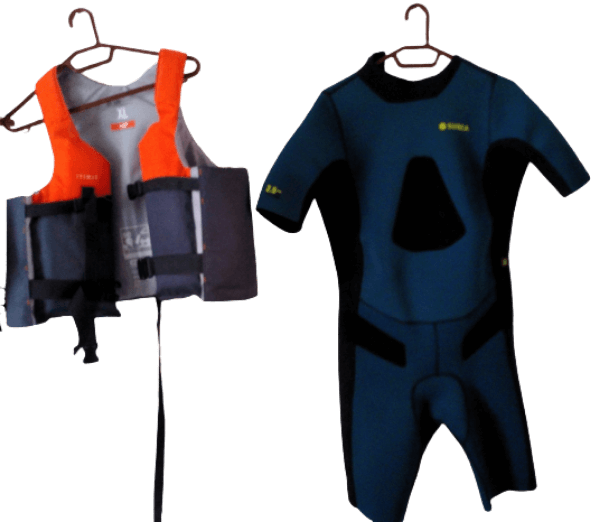
How to prepare for stand-up paddling!
Special training like for downhill skiing is not mandatory for stand-up paddling. Want to prepare at home? We have written down three exercises for coordination and strength for you. Do the exercises 12-15 times with three sets each every three to five days.
Squats or deep squats
With squats, you train your thigh and butt muscles. This will help you get up from cross-legged or kneeling on the SUP. For the squats, stand at least hip-width with your toes and knees pointing out a little. Your heels stay on the ground. If this does not work, place a thin board under your heels.
Hip opening
Stand with your feet wide apart and the tops of your feet pointing outward. Bend your knees slightly and move your buttocks a little from left to right and back. The slight pulling in your inner thighs confirms, you are doing the exercise correctly.
Lizard Pose
Lie flat on the floor. With your hands at shoulder level, push your torso up. Tighten your abdomen, thighs, and buttocks. Pull one leg forward at a time and place the foot next to the hand and back again. This exercise will help you stand up from the board.
7 SUP Rules – Compact knowledge for stand-up paddlers in Malta
1st rule: Check the weather forecast
As usual at the sea, a weather change comes quickly. In the morning at 7 o’clock still looked out the window into an overcast cloudy sky. After the breakfast buffet at 9 o’clock, already sunny weather. Weather forecasts on a 36-hour view are similarly accurate as in Germany. If your (reliable) app or the Maltese weather forecast shows pure sun and no wind, you can trust the statement to 95-98%. The same in the opposite case. If, despite sunny weather in the morning, a storm is forecast in the afternoon, then do not plan a SUP tour.
2nd rule: Follow the few local rules
In Malta, you can SUP pretty much everywhere on the sea. Riding directly on the route of the ferries is neither reasonable nor allowed. However, you will cross the ferry route from Malta to Gozo on the way to Comino. Riding the SUP is not allowed in the demarcated swimming zones on the beaches.
3rd rule: clothing, bag and sun protection
The sun directly on the sea provides between May and September without sunscreen pretty reliably for a sunburn. Recommended equipment for stand-up paddling in Malta are:
+ Headgear, if necessary (UV) shirt, bathing shoes.
+ Waterproof sunscreen with UV protection 50+
+ Life jacket
+ Sunglasses with goggle strap
+ Between November and April, a wet wetsuit is recommended
+ Smartphone for photos and emergency calls (119) and the keys in waterproof case (smartphone case)
+ Waterproof bag (Duffel bag, backpack) for drinks and towel
+ If you wear glasses, a glasses strap
+ Whistle
+ Waterproof music box
4th rule: keep your distance
Quite surprisingly, kayak, canoes, and SUP attract each other on the water 😉 Simplified, whenever distance is needed because of current, it does not work reliably because of waves or wind. So 3–5 meters is a sufficient distance between SUP’s on Malta’s seas. So you can still communicate with each other. The same applies to the shore. If an inflatable SUP is pressed against the cliffs, it can cause damage. Therefore, for your safety, keep a distance of 10–15 meters from the shore and the cliffs.
5th rule: Respect the unspoiled nature in Malta
Avoid the shallow areas near the shore unless you need to land there.
6th rule: Avoid rubbish and disposal on the sea
Probably no one likes to swim or sail in the ocean in a bath of plastic bottles and beverage cans. Regardless, plastic does not degrade for decades and finds its way into the food chain through seafood. The majority of vacations and citizens on Malta avoid litter, so Malta is a fairly clean island landscape. Malta also has trash cans along hiking trails. The empty cardboard, paper and plastic packaging please take back in the Duffel bag or other bags and dispose of them in the many trash cans and containers.
7th rule: Be a role model
Be a role model and follow the simple rules. Usually in Malta, thanks to 320 days of sunshine, we are friendly people and respect all water sports enthusiasts and look out for each other.
FAQ – Do you have question for SUP in Malta? We give you the answers!
What is SUP, stand-up paddling or stand-up paddling?
Stand-up paddling (SUP for short) is when you paddle across the water standing up on a board. What does it remind you of? Canoeists in a western, travel films about Asia, or one-man bamboo rafts in New Zealand and Hawaii.
Where is stand-up paddling prohibited in Malta?
Bans on SUP are rare in Malta. The few bans feature road signs. Generally, designated nature reserves and swimming zones are off limits for SUP. Permanent use of the busy five ferry routes are prohibited. Large buoys mark the routes. You will recognize them quickly, as ferries ply the routes every half hour during the day. We are not aware of any privately owned waters on Malta’s coasts at this time. SUP is allowed in the harbour area. Because also some owners of a yacht drive with SUP to your anchorage.
How far out to sea can I SUP in Malta?
Unlimited, as long as your strength lasts. The closer you get to the shipping lanes, the more turbulent the sea becomes due to ships displaced water. Five hundred meters to 2 km outside the coasts is not uncommon for SUP riders.
Is a license, permit or driving licence required for SUP in Malta?
No, you do not need a licence, permit or driving licence for stand-up paddling. The rental company for paddle boats, kayaks, canoes, and SUP has a Maltese category 3 licence and is allowed to lend you the SUP. (Source Water Sports Operator’s Licence)
How much does stand-up paddling cost in Malta?
The rental price is between pi times thumb 10 and 18 Euro per hour including equipment. The purchase price for an inflatable SUP at Amazon, Lidl, Decathlon, and other sports stores including pump and paddle you get between 300 and 650 euros. As a starter, do not be put off by the professionals who think that only a carbon—paddle and a brand—SUP over 800 euros brings fun. With 400 euros, and aluminium paddle is associated with many years of enthusiasm. Should SUP not be the right workout or relaxation on Malta: The financial loss on resale in Malta is, according to experience, less with a 300 – 450 Euro SUP than with prices of 800 to 1,500 Euro. They can only be transported by a four-wheeled motor vehicle. This makes the SUP complicated. Hard SUP’s are quite extinct in Malta, and we cannot give you reliable prices.
What size is the SUP paddle properly adjusted to in advance?
The paddle should overhang your head by about 20 – 25 cm. If you stretch your arm upwards with slightly bent elbows and grasp the paddle handle, you will reach the “optimal setting”. In our step-by-step guide, we describe how to set the right length on the sea.
What is the right clothing for stand-up paddling?
In summer, a bikini, swimsuit, or swimming trunks are sufficient clothing for stand-up paddling, and for your safety, bathing shoes and life jacket. Headgear and shirt are recommended between July and September. Between December and April, in cool winds and water temperatures below 20 degrees, neoprene shoes and a wet wetsuit are the appropriate clothing for SUP. Jeans, cotton sweaters or hoodies are not appropriate and will make it difficult for you to climb onto the SUP after your swim. Functional clothing and sportswear from surfing, jogging or cycling, for example, are also appropriate. Wear your life jacket even when near the shore. You may be involved in a water accident, for example with another watercraft, through no fault of your own. In that case, a life jacket can save your life.
Which wetsuit is needed in winter in Malta?
Simplified, there are different strengths of the wetsuit as a wetsuit, dry suit and semi-dry suit. Cheap and widely used are wetsuits as wetsuits. The thickness of the material starts with 1.5 mm. In the wetsuit, little water on the arms, neck, and legs penetrates the tight-fitting, skin-friendly inner lining. Thus, heat exchange takes place in the waterproof wetsuit. For Malta’s waters in winter with temperatures between 16 and 18 degrees, wetsuits from 2.5 mm thickness are sufficient. Many wetsuits are one-piece wetsuits and also suitable as shorties for women, men and for children in Malta. For kite surfing or extreme swimming in Malta, a different wetsuit may be the first choice.
Is stand-up paddling with dog possible on Malta?
Of course, the dog is a popular pet in Malta and is included on the SUP. Some water sports enthusiasts have their dog with them on the canoe, kayak and stand-up paddle in Malta as a passenger. Consider the additional weight of your dog when purchasing the SUP.
Can a non-swimmer use SUP in Malta?
Yes, with a life jacket, stand-up paddling is suitable for non-swimmers on many Maltese beaches with water depths less than one meter. However, a non-swimmer rather does not belong on a SUP despite a safety vest.
Is stand-up paddling suitable for prosthesis wearers?
Stand-up paddling in Malta is possible for people with prostheses suitable for water use.
Is stand-up paddling possible for overweight people?
Due to the mostly quiet standing on the SUP and moving with the paddle, stand-up paddling is particularly easy on the joints. This makes stand-up paddling an effective whole-body workout and interesting sport for people with overweight. Stand-up paddling burns a lot of calories without putting extra stress on the joints like running does. The inflatable SUP are available in different weight classes up to 150 kg load.
Wie viel Kalorien werden beim Stand-up-Paddling verbrannt?
Fitnessexperten und Ernährungsexperten meinen, mit einer Stunde SUP verbrauchen Sie zwischen 300 und 700 Kalorien. Bei zügigen Fahrten und auf dem Meer kann der Verbrauch auch auf 1.000 Kalorien hochschnellen. Sie wollen es genau wissen? Besorgen Sie sich eine Fitnessuhr mit Brustgurt einzugeben.
How many calories are burned while stand-up paddling?
Fitness experts and nutritionists think you burn between 300 and 700 calories with an hour of SUP. During brisk rides and on the ocean, consumption can also skyrocket to 1,000 calories. Want to know for sure? Get a fitness watch with a chest strap to enter.
Is a SUP course required?
Canoeing associations and many water sports clubs strongly recommend a SUP course. There is indeed a risk of acquiring a wrong technique and preventing injuries due to wrong movements. On the other hand, in Malta there are so many SUP athletes, why not ask and get help. Stand-up paddling is not complicated, and it can be learned quickly without a course. Otherwise, ask us, we are certainly 4 to 10 times on the sea every month from April to November.
Where are the best places for SUP beginners?
Malta’s beaches are flat and therefore all suitable for starters and beginners of stand-up paddling. With a swell below 0.5 meters and a wind speed of about 5-6 knots, you can already stand-up paddle for learning. A wind speed of 6 knots corresponds to 10 km/h and is a light breeze.
Are you missing a question? Do you want to do stand-up paddling with us in Malta?
Get in touch with us. We are sure we have the right answer.
Conclusion: Enjoy the workout or relaxation with SUP in Malta
Like any water sport, stand-up paddling is a (small) challenge at the beginning. With 320 sunny days and thus almost daily training opportunities, you will quickly find the right technique. You rent a SUP on Malta about every 5 kilometers on the coasts. The purchase of new equipment is relatively cheap to start with. It corresponds to the price of a bicycle or is lower than ski equipment. For Fitness First: The water workout is challenging. Your balance and strength, flexibility, and abdominal and back muscles will strengthen massively.



